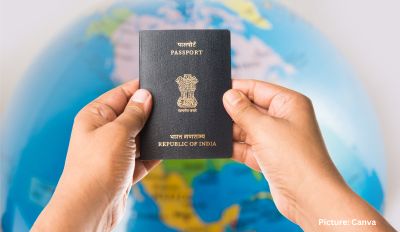On Tuesday, President Joe Biden announced an immediate suspension of asylum processing at the U.S.-Mexico border whenever illegal entries exceed a specific limit he considers excessive. This policy change, effective immediately, is activated when arrests for illegal entry hit 2,500, a significant shift amid an election year that has seen Biden criticized by Republicans for an unprecedented surge in new arrivals.
The U.S. currently experiences about 4,000 daily entries, and this new measure has raised concerns among advocates who argue it endangers migrants and violates international obligations to provide safe haven for those whose lives are at risk. The Biden administration disputes these claims. Legal challenges are expected.
There are questions about the efficacy of this measure in curbing large-scale migrant entries. Although Mexico has agreed to accept back non-Mexican migrants, it will do so only in limited numbers. Additionally, the Biden administration lacks the necessary funding and diplomatic support to deport migrants to distant countries such as China and those in Africa.
Under the current system, asylum seekers can generally live and work in the U.S. while their claims are processed by the overwhelmed immigration courts. This new policy, however, alters the landscape significantly.
How Will This Play Out on the Ground?
The policy suspends asylum processing until average daily arrests for illegal crossings drop below 1,500 for a consecutive week, a threshold last seen in July 2020 during the COVID-19 pandemic. Unlike the pandemic-related asylum restrictions known as Title 42, which carried no legal consequences and encouraged repeat attempts, the new policy will issue deportation orders to those denied a chance to seek asylum. This exposes them to criminal prosecution if they attempt to re-enter and bans them from legally entering the country for several years.
“We are ready to repatriate a record number of people in the coming days,” stated Blas Nuñez-Neto, assistant homeland security secretary for border and immigration policy, during a conference call for Spanish-language reporters.
Migrants expressing fear for their safety upon deportation will be screened by U.S. asylum officers under stricter standards than currently in place. If they pass this screening, they may pursue other forms of humanitarian protection, such as those outlined in the U.N. Convention Against Torture. Unaccompanied children are exempt, which may lead some parents to send their children across the border alone.
**What Role Does Mexico Play?**
Mexico’s role is crucial. The U.S. has limited resources to fly migrants back to over 100 countries, including many in Africa and Asia. It also lacks the diplomatic influence and logistical arrangements necessary to deport large numbers of migrants to countries like China, Russia, and Venezuela.
A 1997 court order generally restricts the detention of families with children under 18 to 20 days, an ambitious and likely unrealistic timeframe for screening and deporting those expressing fear of deportation. Even for single adults, U.S. Immigration and Customs Enforcement (ICE) has the capacity to detain only about 34,000 people at a time.
Mexico has agreed to take back up to 30,000 people per month from Cuba, Haiti, Nicaragua, and Venezuela, in addition to Mexicans. However, this commitment does not extend to other nationalities. This year, Mexico has also made it more difficult for migrants to reach the U.S. border by preventing them from riding freight trains and stopping them on buses to turn them back to southern Mexico. While Mexican authorities block migrants’ progress, relatively few are deported, leaving many stranded in Mexican cities far from the U.S. border.
Alicia Bárcena, Mexico’s foreign relations secretary, stated last month that Mexico will not allow more than 4,000 illegal entries per day. President-elect Claudia Sheinbaum, set to take office on October 1, is expected to continue the policies of her mentor, current President Andrés Manuel López Obrador.
Has This Been Tried Before?
This measure is the latest in a series of attempts by both the Biden and Trump administrations to deter asylum seekers, none of which have had lasting effects. In May 2023, Biden imposed similar restrictions on asylum for those crossing the border illegally after passing through another country, such as Mexico. A federal appeals court has allowed those restrictions to remain in place while advocates challenge them, but their impact appears minimal.
Illegal crossings decreased following last year’s restrictions, but the reduction was temporary as the number of screening officers was insufficient for the task. The application of the rule to only a small percentage of arrests highlighted the gap between budget allocations and policy ambitions.
Biden invoked a section of the Immigration and Nationality Act allowing the president to ban entry for groups of people if their presence “would be detrimental to the interests of the United States.” Former President Donald Trump used this power to ban entry from predominantly Muslim countries, though advocacy groups are likely to argue that Biden has not adequately met the “detrimental” criterion.
This latest policy shift reflects ongoing efforts to manage and control the influx of migrants at the U.S.-Mexico border, balancing international obligations with domestic pressures and resource limitations. The effectiveness and legality of the new measure will be closely scrutinized in the coming months, as its implementation impacts both migrants and the broader immigration system.











